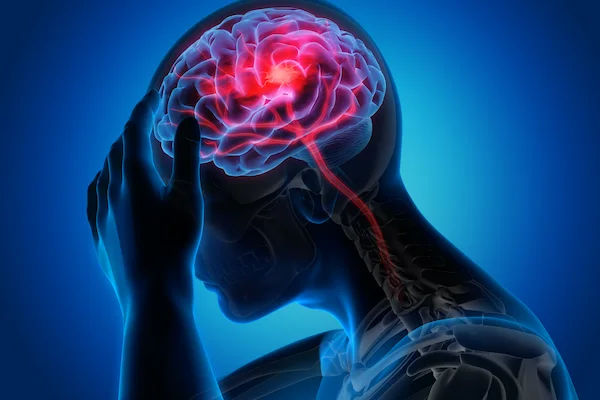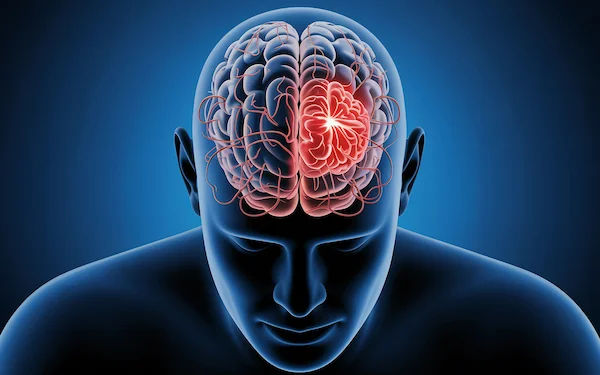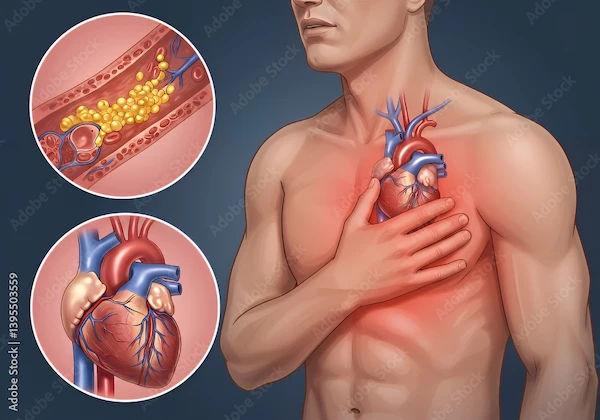Understanding a Mini Stroke (TIA)
A mini stroke, also called a transient ischaemic attack (TIA), is a warning sign of a possible future stroke. Learn how to recognise symptoms, understand causes, and take urgent steps to protect your brain health.

Written by Dr. Md Yusuf Shareef
Reviewed by Dr. D Bhanu Prakash MBBS, AFIH, Advanced certificate in critical care medicine, Fellowship in critical care medicine
Last updated on 29th Oct, 2025
.webp?tr=q-80,f-webp,w-350,dpr-2,c-at_max 700w)
Introduction
A mini stroke, medically called a transient ischaemic attack (TIA), is a brief interruption of blood flow to the brain. Although symptoms typically resolve within minutes, the event itself is a serious warning sign. A TIA indicates that an artery or the heart has created conditions for a clot to travel to the brain. Without rapid assessment and treatment, the chance of a full stroke rises sharply, especially in the first 48 hours. The benefit of a TIA is that it gives you time — a crucial second chance — to take protective action. Recognising the signs, seeking urgent medical care, and following a structured prevention plan can significantly reduce long-term risk. This guide explains symptoms, causes, diagnosis, and the essential steps to safeguard brain health.
Consult a Top Cardiologist for Personalised Advice
What Is a Mini Stroke (TIA)?
A brief, temporary disruption of blood flow to the brain that requires urgent medical attention.
A mini stroke, medically known as a transient ischaemic attack (TIA), occurs when blood flow to part of the brain is temporarily blocked. It serves as a crucial warning that a more severe stroke could follow if preventive measures are not taken.
Mini Stroke vs Stroke: What’s the Difference?
• Mini Stroke (TIA): Temporary blockage. Symptoms resolve quickly, typically within minutes to an hour. Imaging may not show permanent damage.
• Stroke: Lasting blockage or bleeding leads to brain injury (infarction) and often permanent neurological deficits.
Why “Transient” Doesn’t Mean “Trivial”
Even if normal function returns quickly, a TIA signals high short-term stroke risk — especially within the first 48 hours and for several months afterwards.
What Happens in the Brain During a TIA?
• A small clot or a narrowed artery reduces oxygen flow to brain tissue.
• Affected brain areas malfunction, causing sudden symptoms.
• When blood flow resumes, symptoms fade — but the underlying disease remains.
Key Insight: Symptoms that disappear within minutes can still indicate a significant danger. Treat the first 24–48 hours as a critical window for prevention.
Recognising the Symptoms
Immediate recognition can save brain tissue and prevent a disabling stroke.
Every minute counts. The BE-FAST tool helps identify symptoms quickly.
BE-FAST — Balance, Eyes, Face, Arm, Speech, Time
• Balance: Sudden dizziness, imbalance, or problems walking.
• Eyes: Sudden vision loss or double vision.
• Face: One-sided facial droop or uneven smile.
• Arm: Weakness or numbness in one arm or leg.
• Speech: Slurred speech or difficulty understanding.
• Time: Act immediately — call emergency services.
Common and Less Typical Symptoms
• Common: One-sided weakness or numbness, facial droop, slurred speech, temporary loss of vision in one eye, sudden loss of balance.
• Less Typical: Sudden confusion, swallowing difficulty, severe headache, or brief altered awareness.
Example: A person suddenly cannot speak clearly or lift a cup, but completely recovers in minutes — this still warrants emergency medical care.
Do not wait or drive yourself to the hospital — call an ambulance.
Why a Mini Stroke Is a Medical Emergency
The risk of a full stroke is highest immediately after a TIA.
Symptoms improving do not mean the danger has passed.
Why You Shouldn’t “Wait and See”
Seeking urgent care enables:
• Rapid assessment and stroke prevention medicines
• Brain and neck vessel imaging
• Heart rhythm monitoring to detect atrial fibrillation
• Aggressive early risk-factor control
When to Call Emergency Services
• Any sudden BE-FAST symptom — even if it disappears
• Multiple short episodes over hours or days
• New neurological symptoms after a recent TIA
Early action can prevent long-term disability.
Causes and Risk Factors
Understanding the cause helps tailor the right prevention strategy.
TIAs share most causes with ischaemic strokes — mainly disorders that promote clot formation or reduce blood flow to the brain.
Atherosclerosis and Carotid Plaque
Artery narrowing from cholesterol-rich plaque can send tiny clots to the brain. High blood pressure, smoking, and high LDL cholesterol all accelerate this process.
Atrial Fibrillation and Heart-Related Clots
An irregular heart rhythm allows blood to pool and clot, sending emboli to the brain. These cases often require anticoagulant therapy.
Other Major Risk Factors
• Hypertension (the most significant modifiable risk)
• Diabetes
• High LDL cholesterol
• Obesity and inactivity
• Smoking
• Excess alcohol or stimulant drug use
• Sleep apnoea
Hormones, Pregnancy, and Special Situations
• Oestrogen-containing contraceptives or HRT may raise clot risk in some individuals.
• Pregnancy/postpartum increases clotting tendency.
• Migraines with aura can mimic TIAs — medical assessment is crucial.
Key Insight: Multiple mild risk factors can combine to greatly increase risk — targeting them together offers strong protection.
Diagnosing a Mini Stroke
Urgent evaluation identifies the cause to reduce future stroke risk.
Brain Imaging
• CT scan: Fast, rules out bleeding.
• MRI (DWI): Detects small areas of recent ischaemia that may not appear on CT.
A normal scan does not rule out a TIA — the story of sudden onset and recovery is key.
Vascular Imaging
• Carotid ultrasound: Detects neck artery narrowing.
• CTA/MRA: Visualises head and neck vessels for blockages or dissections.
Heart Evaluation
• ECG: Finds atrial fibrillation immediately.
• Holter or patch monitor: Captures intermittent rhythm issues.
• Echocardiogram: Assesses heart structure and clot sources.
Blood Tests and Risk Assessment
Common tests include cholesterol levels, HbA1c, kidney function, blood count and clotting tests. Risk-scoring tools such as ABCD2 help guide urgency and management.
Treatment After a Mini Stroke
The focus is on preventing a future stroke — quickly and effectively.
Antiplatelets vs Anticoagulants
• Antiplatelets (e.g., Aspirin, Clopidogrel): Standard for many TIAs.
• Dual antiplatelets (short-term): May be used early in certain high-risk cases.
• Anticoagulants (e.g., DOACs, Warfarin): Needed if the TIA is from atrial fibrillation or heart-related clots.
Carotid Interventions
For significant carotid narrowing, surgery (endarterectomy) or stenting may be recommended to reduce stroke risk.
Risk Factor Targets
Risk Factor Typical Goal for Prevention (Individualised)
Blood Pressure Often <130/80 mmHg
LDL Cholesterol <70 mg/dL (or <1.8 mmol/L) with statins
Diabetes (HbA1c) Controlled within the target set by the clinician
Smoking Complete cessation
Lifestyle changes such as a heart-healthy diet, physical activity, weight control, limiting alcohol, and treating sleep apnoea remain essential.
Preventing a Future Stroke
Prevention starts immediately and continues long-term.
Mediterranean-Style Diet
Vegetables, fruits, whole grains, legumes, fish, olive oil, and nuts support healthier vessels and reduce inflammation.
Quick swap: Half your plate should be colourful vegetables.
Exercise, Sleep, and Stress
• 150 minutes/week of moderate activity
• Strength work 2 days/week
• Good sleep hygiene — evaluate snoring or poor sleep
• Stress reduction using relaxation or mindfulness techniques
Follow-Up Timeline
• First 2 weeks: Review medicines and test results
• 1–3 months: Reassess blood pressure, cholesterol, glucose
• 3–12 months: Ongoing risk management and lifestyle monitoring
Regular follow-up ensures treatment remains effective and personalised.
Conclusion
A mini stroke is a reversible neurological event — but its message is serious. Recognising symptoms early, calling emergency services immediately, and engaging in thorough evaluation can dramatically reduce the risk of a disabling stroke. The right combination of medicines, risk-factor control, and healthy lifestyle choices protects the brain for the long term. Consult a Top Cardiologist for Personalised Advice
Consult a Top Cardiologist for Personalised Advice

Dr. Vithal D Bagi
Cardiologist
15 Years • MBBS, MD,DM (Cardiology),DNB (Crdiology ),FSCAC,Senior Consultant & Interventional Cardiologist
Bengaluru
Apollo Hospitals Jayanagar, Bengaluru
Dr.bino John Sahayo J
Cardiologist
18 Years • Fellowship in Intravascular Imaging, DNB (Cardio),DM (Cardio), DNB (Gen.Med),MD (Gen.Med),MBBS
Chennai
Apollo Speciality Hospitals OMR, Chennai

Dr. Venkatesh T K
Cardiologist
10 Years • MBBS, MD (Med), DNB (Cardio)
Bengaluru
Apollo Hospitals Jayanagar, Bengaluru
(75+ Patients)

Dr. Abhishek Rathore
Cardiologist and Electrophysiologist
7 Years • MBBS, MD (Gen. Medicine), DM ( Cardiology ), Post-Doctoral Fellowship in Cardiac Electrophysiology.
Indore
Apollo Hospitals Vijay Nagar, Indore

Dr. Sarita Rao
Cardiologist
17 Years • MBBS, DM (Cardiology)
Indore
Apollo Hospitals Vijay Nagar, Indore
Consult a Top Cardiologist for Personalised Advice

Dr. Vithal D Bagi
Cardiologist
15 Years • MBBS, MD,DM (Cardiology),DNB (Crdiology ),FSCAC,Senior Consultant & Interventional Cardiologist
Bengaluru
Apollo Hospitals Jayanagar, Bengaluru
Dr.bino John Sahayo J
Cardiologist
18 Years • Fellowship in Intravascular Imaging, DNB (Cardio),DM (Cardio), DNB (Gen.Med),MD (Gen.Med),MBBS
Chennai
Apollo Speciality Hospitals OMR, Chennai

Dr. Venkatesh T K
Cardiologist
10 Years • MBBS, MD (Med), DNB (Cardio)
Bengaluru
Apollo Hospitals Jayanagar, Bengaluru
(75+ Patients)

Dr. Abhishek Rathore
Cardiologist and Electrophysiologist
7 Years • MBBS, MD (Gen. Medicine), DM ( Cardiology ), Post-Doctoral Fellowship in Cardiac Electrophysiology.
Indore
Apollo Hospitals Vijay Nagar, Indore

Dr. Sarita Rao
Cardiologist
17 Years • MBBS, DM (Cardiology)
Indore
Apollo Hospitals Vijay Nagar, Indore
More articles from Stroke
Frequently Asked Questions
1. How long do mini-stroke symptoms last?
Most TIAs resolve within minutes and by definition within an hour. Despite this, stroke risk peaks in the first 48 hours — always seek emergency care.
2. Is a mini stroke a warning stroke?
Yes. It is a medical warning that a major stroke could follow without timely prevention.
3. Can stress cause a mini stroke?
Stress does not directly cause a TIA but can worsen blood pressure and other risk factors.
4. How is a mini stroke diagnosed?
With brain imaging, vessel imaging, heart rhythm monitoring, heart ultrasound, and targeted blood tests.
5. What should I change after a TIA?
Continue prescribed medicines, manage blood pressure and cholesterol, stop smoking, adopt a brain-healthy diet, and attend regular follow-ups.




